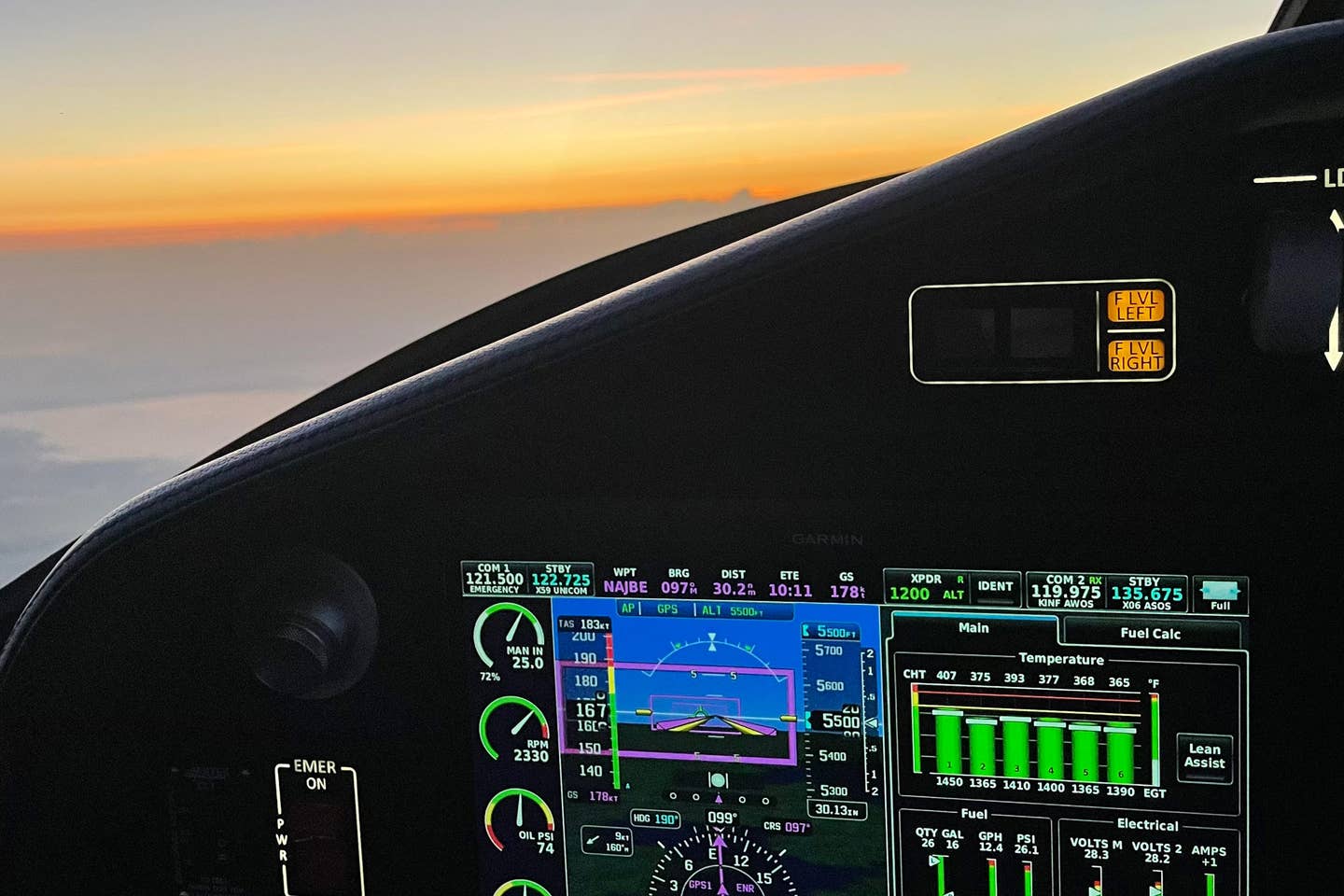
A well-planned descent begins well before the top-of-descent point. Julie Boatman
Planning the high-speed descent phase of a flight requires some judgment, especially during summer months when we like to cruise in cool comfort above the build-ups and the haze layer. That’s usually 10,000 feet or higher in summer, at least where I do most of my flying on the eastern half of the country (mountain flying ‘Out West’ is a whole ‘nuther ball game).
In a section of his book Weather Flying, Robert Buck labels one section ‘It’s rougher than you think’ with good reason. He discusses the let-down phase of a flight and some potential hazards to passengers’ comfort at best; and the aircraft structural integrity at worst. Buck lays out the scenario of the pilot pushing the nose down “until the airspeed needle is tickling the red line.” Or worse. The smooth air up high and the impressive groundspeed readout is tempting, but there’s a serious gotcha here. Buck continues: “He slips down through the inversion into the convective layer and suddenly he is hitting really solid bumps.
The combination of very high speed and the strong bumps is certainly putting a heavy load on the structure.” Buck advises pilots to reduce airspeed before reaching the tops of the haze layer, which should be easily visible. After feeling the bumps and gauging their intensity, you can then make an educated decision on what speed will work well for the remainder of the descent phase.
Buck’s advice was front-of-brain for me a couple weeks ago when returning to New Jersey from a weekend in Niagara Falls. The trip up went slowly; my choices were flying above the haze into a stiff headwind or a bit faster down below in the bumps. Coming home, up high above the buildups, I saw some impressive groundspeeds as the tailwind component measured as great as 44 knots. At altitude, the Bonanza affords a generous margin on the airspeed indicator, so there is lots of “extra green” available for speeding up on the way down.
Still, I was cautious as we approached the top of the haze layer. It looked like we were descending into a bowl of soup. As it happened, the air was mostly stable, if uncomfortably warm and I was comfortable completing the descent with the indicated airspeed a smidgen or two below the yellow arc.
Thanks, Captain Buck. It was nice having you aboard.

Sign-up for newsletters & special offers!
Get the latest FLYING stories & special offers delivered directly to your inbox






